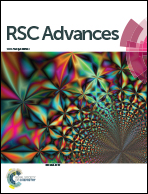Research on the tribological behavior of a nanocrystalline zinc coating prepared by pulse reverse electrodeposition
Abstract
Nanocrystalline zinc coatings are electrodeposited by direct current (DC), pulse current (PC) and pulse reverse current (PRC) techniques in a sulfate bath with polyacrylamide as the only additive and are characterized by field-emission scanning electron microscopy (FESEM), atomic force microscopy (AFM) and X-ray diffraction (XRD). In addition, the influence of current waveforms on grain size, surface roughness and crystallographically preferred orientation of the coatings are analyzed. Specially, the tribological behavior of nanocrystalline and coarse-grained zinc coatings is investigated by nanoindentation, ball-on-disc friction test, profilometer, FESEM and energy dispersive X-ray spectroscopy (EDS). The results show that PRC electrodeposition of a nanocrystalline zinc coating has significant advantages in control of the grain size and surface roughness of the coating over DC and PC electrodeposition. The hardness of the nanocrystalline zinc coating produced by PRC electrodeposition is almost three times that of the coarse-grained counterpart. And the average wear rate of the nanocrystalline zinc coating is approximately 1/24 of that of the coarse-grained zinc coating. The friction and wear mechanism of zinc coatings experiences transition from severe adhesion and abrasion wear (coarse-grained zinc) to a slight abrasion and oxidation wear (nanocrystalline zinc) with the reduction of grain size.


 Please wait while we load your content...
Please wait while we load your content...